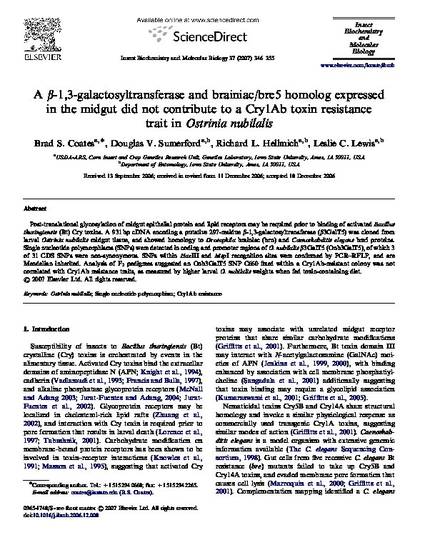
Post-translational glycosylation of midgut epithelial protein and lipid receptors may be required prior to binding of activated Bacillus thuringiensis (Bt) Cry toxins. A 931bp cDNA encoding a putative 297-residue beta-1,3-galactosyltransferase (beta3GalT5) was cloned from larval Ostrinia nubilalis midgut tissue, and showed homology to Drosophila brainiac (brn) and Caenorhabditis elegans bre5 proteins. Single nucleotide polymorphisms (SNPs) were detected in coding and promoter regions of O. nubilalis beta3GalT5 (Onb3GalT5), of which 3 of 31 CDS SNPs were non-synonymous. SNPs within HaeIII and MspI recognition sites were confirmed by PCR-RFLP, and are Mendelian inherited. Analysis of F(2) pedigrees suggested an Onb3GalT5 SNP C660 fixed within a Cry1Ab-resistant colony was not correlated with Cry1Ab resistance traits, as measured by higher larval O. nubilalis weights when fed toxin-containing diet.
Available at: http://works.bepress.com/richard_hellmich/89/

This article is from Insect Biochemistry and Molecular Biology; 37 (2007); 346-355; doi: 10.1016/j.ibmb.2006.12.008